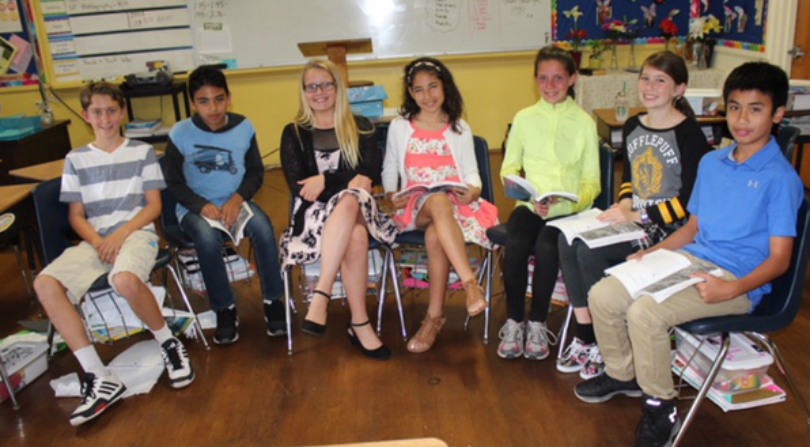Once a month on Friday evening, over fifty students in grades five through eight return to school. These students participate in the Junior Great Books program that began three years ago at St. Didacus Parish School in Normal Heights. Students are invited to participate in the program based on their reading test scores and teacher recommendations. The program runs from September to May.
Junior Great Books began in the 1960s as an outgrowth from the Great Books Foundation. Originally, the program was run as book clubs for adults that focused on the great writers of Western Civilization. Today, the curriculum is offered in schools as a reading program within the school day. The St. Didacus program is run more like a book club for students who like to read and discuss. Each grade level has its own book, and the discussion groups are run by young adult volunteers.
I had several purposes in mind when I started this program at St. Didacus. I noticed that over the years students were becoming more reluctant to express opinions in class. How can I expect students to become good writers if they aren’t expressing themselves orally? I remembered, as a fifth grader once myself, that being asked to join Junior Great Books was an honor. It meant that my teacher noticed I liked to read, and that I was a good reader. I was in Junior Great Books for four years. This is where I learned to express myself and become aware of a writer’s purpose and style. It was also fun to go to school at night and not have to wear a uniform!
I wanted the program at St. Didacus to be led by young adults who weren’t teachers or parents, and who would introduce the students to people who were working on college degrees or who had recently graduated. I always stress with the leaders that it should not feel like school; I really want the students talking, discussing and debating.
As we begin to wrap up another year of Junior Great Books at St. Didacus, the students’ continued excitement for the program exemplifies an enthusiasm for reading that is creating lifelong readers in our school.
By Rita Blickenstaff


